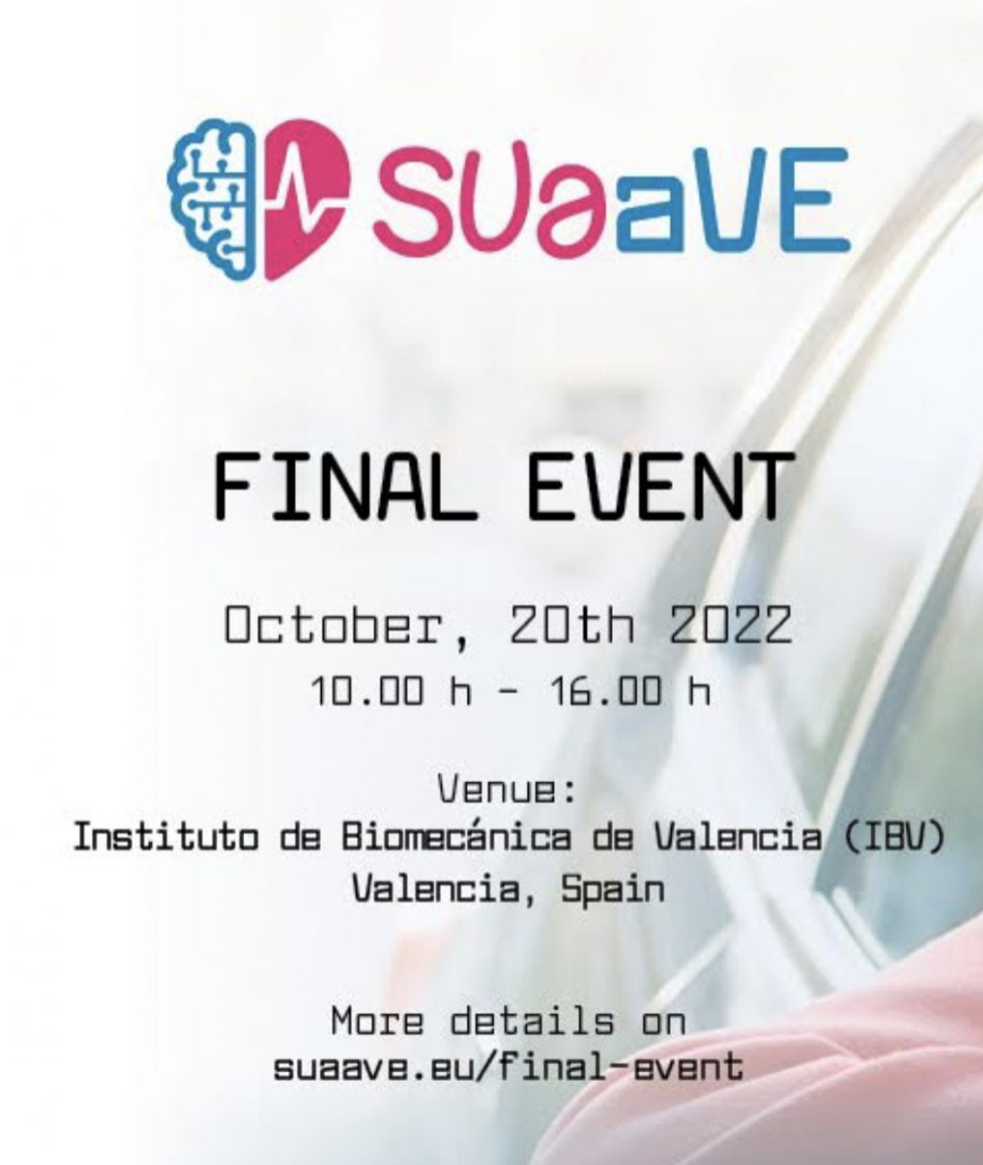SUaaVE
On October 20 th 2020, we took part to the final event of SUaaVE SUpporting acceptance of automated VEhicle project organised by the Instituto de Biomecanica (IBV) in the city of Valencia, Spain.
The outcomes of this European project prove to be crucial for our own project SINFONICA future development.
As a matter of fact, we realise technology is developing at a fast pace reaching levels that might be difficult to be accepted by the public. Both CAV and CCAM technologies are characterised by a high level of automation that is going to replace actions we were used to performed by ourselves daily. Therefore, it is of utmost importance to investigate the doubts and concerns of the users, to enhance the communication between the machine and the person. While, at the same time, create a safe and reliable technology able to empathise with users on a deeper level.
What is the goal of SUaaVE?
The development of CAV technologies is rapidly increasing throughout Europe, but it seems that users trust is not going as fast as research hoped to. There’s still suspicion towards automated driving, especially with regards to user awareness and ethics. Therefore, is of outmost importance to lay the foundation of a solid future development based on increased consideration towards the human side of the technology.
This is exactly where the project SUaaVE comes into place, by investigating users’ emotions towards the implementation of CAV technologies. The project realised that psychological framework is crucial in enhancing the human-machine interaction.
The emotional connection is paramount for the user to fell safe and confident in using CAV. The derived outcomes are the following: the creation of a V-HCD platform, the definition of guidelines to support public authorities in developing a safe an ethic framework, the creation of ALFRED, the architecture empathising with the user.
What is the goal of SINFONICA?
The European project SINFONICA, led by University of Modena and Reggio Emilia, focuses on “Social Innovation to Foster iNclusIve cooperative, Connected and Automated mobility”. Its goal is to determine innovative methods and tools to engage CCAM users and understand their wants and expectations towards the use of the technology. Given its link to social science, SINFONICA carries its work with a particular focus on the so-called category of Vulnerable Road Users (elderly, immigrants, disabled, etc…) so to investigate ways to make tool more equitable.
Next Steps
With technologies moving towards a dimension that is more and more automatised, it is crucial to create a safe and trustworthy environment for users to enjoy the advantages of the scientific progress. At the same time, we want a technology that is sure to comply to both safety and ethical standards. The future challenge is the creation of a technology that is not only unrivalled in terms of development, but in terms of its ability to respond to societal challenges and needs as well. With a blend of automatization built on human inputs and interactions.

